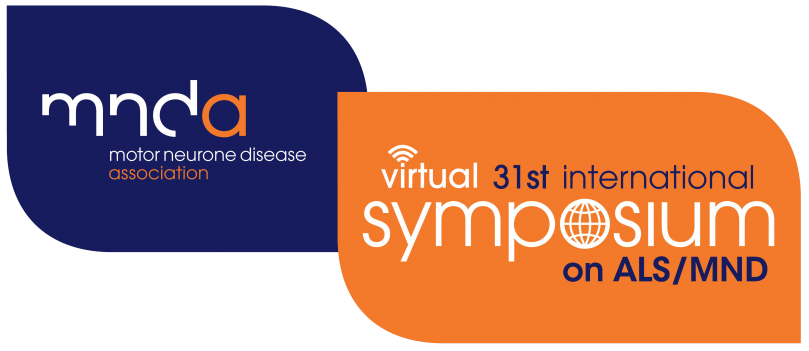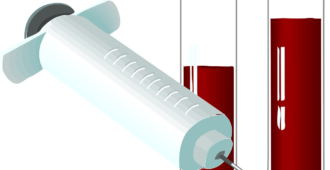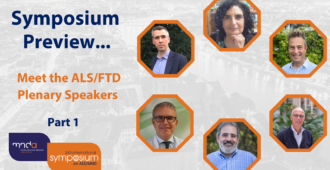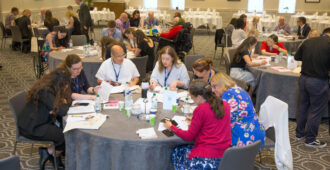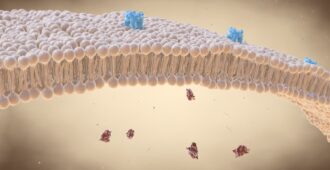This blog is part of the ‘Virtual Highlights’ collection of articles, where you can read about the content of some of the talks and posters presented at the Virtual 31st International Symposium on ALS/MND. This presentation was part of Session 3: Clinical Trials
Co-presented by Dr Merit Cudkowicz, from Harvard Medical School and Massachusetts General Hospital, and Dr Ralph Kern from BrainStorm Cell Therapeutics, this presentation discussed the keenly awaited results of the Phase 3 clinical trial of NurOwn.
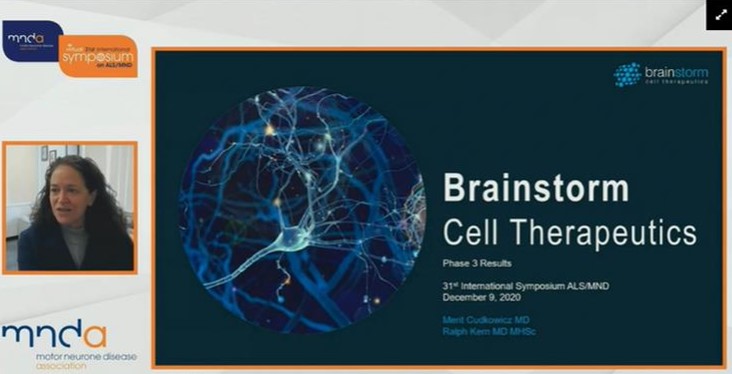
A brief description of NurOwn
NurOwn is cell-based investigational therapy that uses mesenchymal stem cells (MSC), which are capable of differentiating into other cell types, to promote and support the repair of nerve cells.
The Phase 3 clinical trial
A total of 189 people were screened for this trial and only rapid progressors, defined by a decline in the ALSFRS-R of three points over a 12-week run-in period, were eligible to take part. Participants were randomised 1:1 to either the NurOwn group or the placebo group. Treatment was received at baseline visit and at weeks 8 and 16, followed by a post-treatment follow-up period.
It was found that randomisation of participants led to more people with an ALSFRS-R score between 15-25 in the NurOwn group (that is, people who were more progressed in their disease) than the placebo group.
The primary endpoint was defined as a ‘responder’ analysis – someone with a greater than 1.25 points per month improvement in post-treatment slope vs pre-treatment slope in ALSFRS-R score. Secondary endpoints included safety, ALSFRS-R change from baseline, the Combined Assessments for Function and Survival (CAFS), slow vital capacity (SVC), and cerebrospinal fluid (CSF) biomarkers.
Were these endpoints met?
Primary endpoint
At every time point over the study there was a higher percentage of responders in the NurOwn group, but at the end of the 28-week study this was not statistically significant over placebo – 34.7% in the NurOwn group met the responder definition compared to 27.7% in the placebo group.
Secondary endpoints
ALSFRS-R mean scores were similar for both NurOwn and placebo groups and there was no difference in CAFS scores between the groups at the end of 28-weeks treatment.
SVC was not different between the groups, although results may have been affected by the COVID-19 pandemic as SVC assessments were not possible at this time. At week 16, a slight improvement had been noted but cannot be confirmed.
Looking at sub-groups of participants
When looking at responder analysis in pre-specified subgroups, it was found that people who had a baseline ALSFRS-R score of more than 35 responded better to NurOwn than those people whose baseline ALSFRS-R score was less than 35.
In the group of participants who started with an ALSFRS-R score of more than 35, there were more responders at every time point in the NurOwn group than the placebo group and at week 28, 34.6% of people on NurOwn were responders compared to just 15.6% of people on placebo. However, because this sub-group of participants was small, these results did not reach statistical significance.
In the group whose ALSFRS-R score was less than 35 at baseline, there was no difference in the number of responders between the NurOwn group (34.8%) and the placebo group (33.9%) at week 28.
The CAFS score also reflected differences in these sub-groups and the majority of people who died during the study were in the group with a baseline ALSFRS-R score of less than 35.
It is known that interpreting ALSFRS-R score data from people who have lower scores, when they are being treated, is challenging and this data is being studied further to better understand this difference.
Biomarkers
What are biomarkers and why are they important? Biomarkers are used as an indication that a biological process in the body has happened or is ongoing and has to be something that can be measured accurately and be reproduced time after time. Biomarkers can be used to find out how the body responds to being given a medicine, or a placebo, in a clinical trial and their use will become significantly more widespread as personalised medical care becomes standard.
Treatment with NurOwn consistently modifies markers of neuronal injury, neuroinflammation and neuroprotection, decreasing levels of potentially harmful biomarkers and increasing levels of potentially protective markers. This consistent effect on biomarkers is important in understanding how NurOwn can affect multiple pathways in ALS.
For example, one of the CSF neuroinflammatory biomarkers – MCP-1 – was seen to be consistently lower at all time points in the NurOwn group compared to placebo. This is an important observation because MCP-1 is known to interact with disease progression as measured by ALSFRS-R and survival.
Neurofilaments are increasingly becoming important as a way to monitor disease prognosis and predictive response to treatment. Neurofilaments were decreased at all time points in the NurOwn group and not decreased in the placebo group. This is also important as neurofilaments correlate very well with ALS functional loss and survival.
Neurotrophic factors (which protect and nourish neurons) called VEGF and HGF are elevated at all times in the NurOwn group and not in the placebo group. These are known for their interactions with ALS disease pathways as protective molecules.
CSF markers of cell death are also very quickly decreased after treatment with NurOwn compared to placebo.
Key questions were asked as part of the evaluation of NurOwn and observed treatment effects. The analysis of data is not yet complete, and the researchers expect additional insights to be forthcoming, including usefulness in predicting which patients might be more likely to respond to NurOwn. Further understanding of the placebo response in the trial, and this data, could be key to providing a path to approval by the US Food & Drug Administration (FDA).
Hot off the press
On 14 December, BrainStorm announced the initiation of an Expanded Access Program (EAP) for participants less severely affected by ALS, as measured by the ALSFRS-R, who completed the Phase 3 clinical trial. You can read more in this press release.

